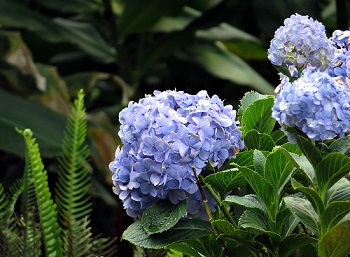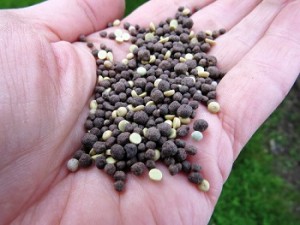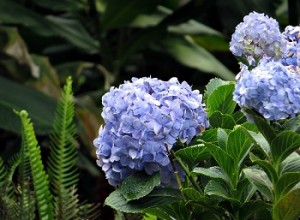If you’ve ever been on a garden tour with people from various locations, you’ll eventually hear someone say, “Oh, I wish I could grow blue hydrangeas like that. Mine are always pink.” I know this because I’ve said it myself.
If your hydrangeas (which actually prefer acidic soils, but are very adaptable) naturally bloom pink, you’ve got alkaline soil. Just like curly or straight hair, we seem to want what we don’t have. But that’s why perms and soil acidifiers were invented.
Changing the color of your hydrangeas isn’t the only reason you might have for wanting to manipulate your soil’s pH. After all, the color of a plant’s blooms usually has nothing to do with the health of the plant itself. The pH of the soil in which you grow some plants does.
pH matters
All soils have a pH, ranging from 1 to 14. Seven is considered to be neutral, with lower numbers being acidic and higher ones alkaline, and it’s an important consideration when trying to grow certain plants. The majority of plants will grow just fine in neutral to slightly alkaline soils, but some, like azaleas, rhododendrons, blueberries, and hollies, prefer acidic soil. While they may survive in alkaline soils, they likely won’t thrive.
Jobe’s Organics Soil Acidifier can help change your pH situation. This granular soil amendment consists of all natural ingredients and adds sulphur to the soil. Sulphur is often recommended over other acidic products such as aluminum or iron sulfates, as it lowers the pH by reacting with natural bacteria.
Jobe’s Organics Soil Acidifier can be used with plants that are grown in the ground or with plants grown in a container. It may be a bit easier to adjust the pH of the soil with container-grown plants, and most acid-loving plants grown by backyard gardeners can be grown this way. Some of the newer varieties of blueberries have been bred specifically for containers.
And then there are those hydrangeas. Though they adapt to alkaline soils better than most acid loving plants, you might see the foliage taking on a lighter shade of green, with darker veining. This is a sign of chlorosis. Often plants that prefer acidic soil conditions will have chlorotic leaves if the soil pH is too high. Use of a soil acidifier can lower the pH, promoting darker green foliage, and in the case of hydrangeas, it can change the color of their blooms to purple or blue instead of pink.
Of course, you could just grow plants that naturally prefer whatever native soil conditions your garden has, but thanks to Jobe’s Organics Soil Acidifier, you don’t have to limit yourself in that way. Easy-to-follow directions are on the package. Jobe’s Organics® Soil Acidifier comes in a granular form that you mix in with your soil. Be sure to water well after you add it according to package directions.
Whether or not hydrangeas will bloom blue or pink largely depends on the pH of the soil. By using Jobe’s Organics® Soil Acidifier , it’s possible to alter the pH of alkaline soil to be more acidic, and thus change the color of hydrangea blooms from pink to blue.
Kylee Baumle is well into her second career as a garden writer, as well as being a Registered Dental Hygienist for the past 39 years. An indoor gardener since her college days, she also tends to an acre of land in rural northwest Ohio.



